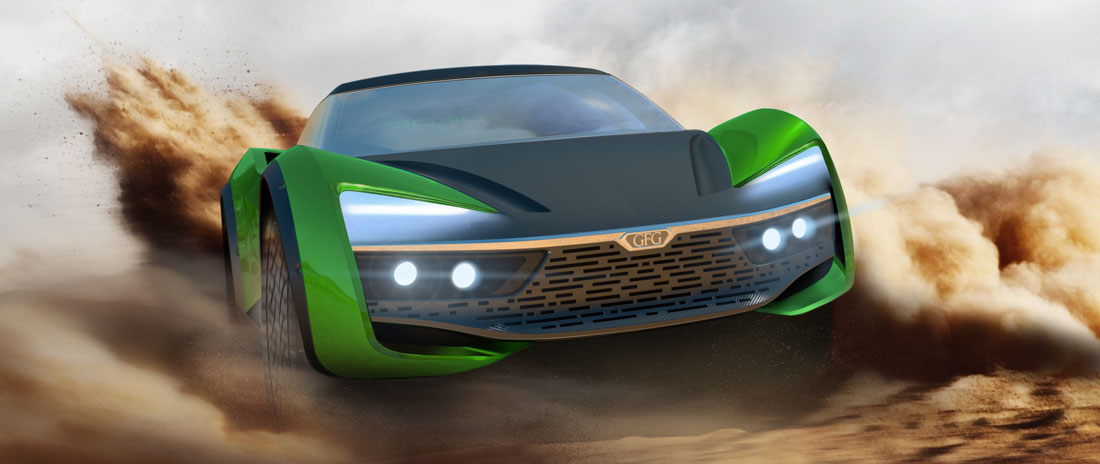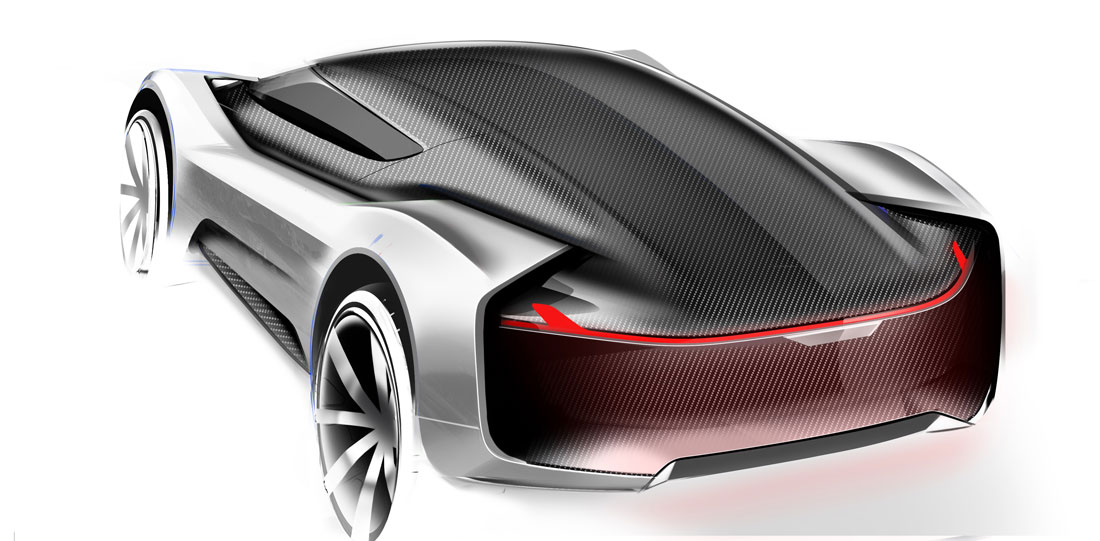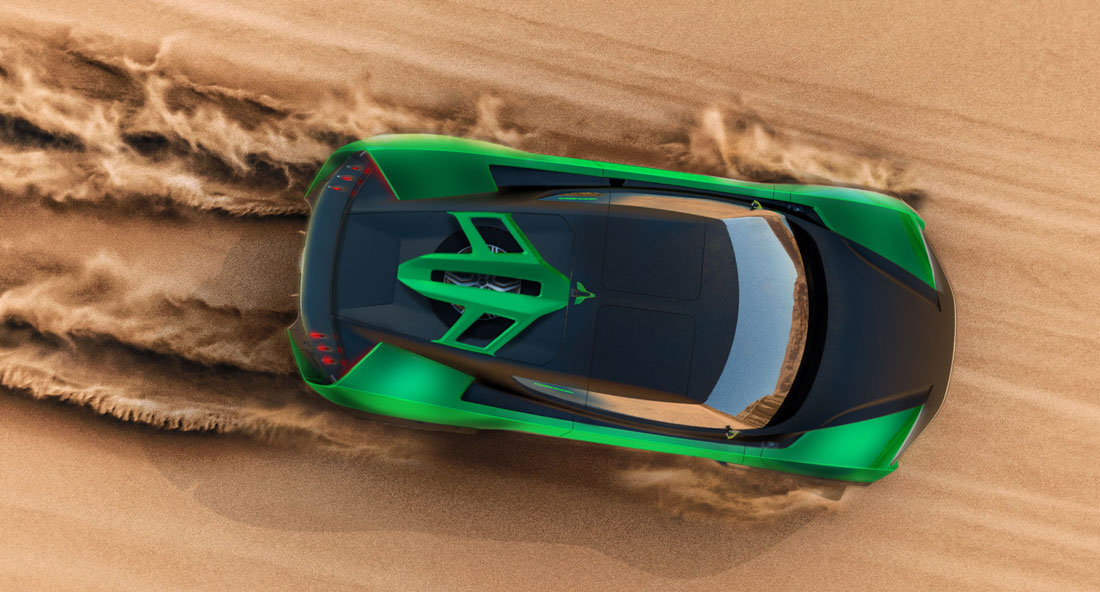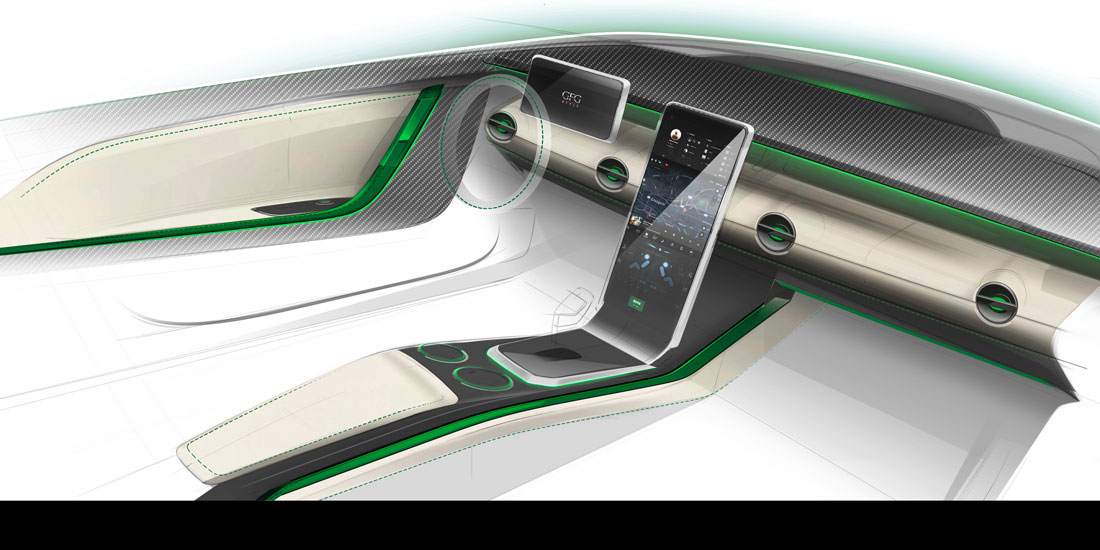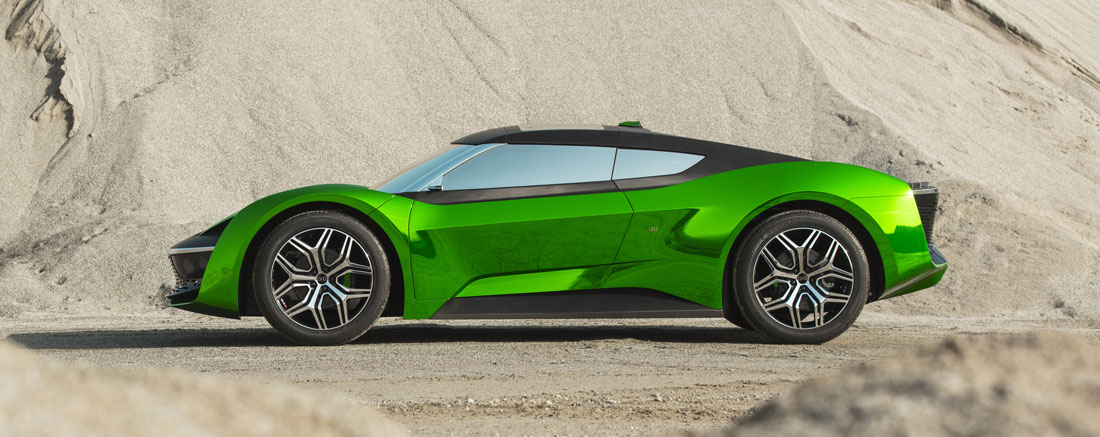A car without compromises, able to travel at high speeds both on the motorway and on desert dunes with electric motors and in total safety. If the vehicle is inspired by a country, then the conformation of the land becomes an integral part of the design brief, as in the case of Vision 2030, one of GFG Style’s most recent creations, the Giorgetto and Fabrizio Giugiaro design house. “Saudi Arabia asked us to design a model that would perfectly adapt to their region, which is made of big roads – all new and really wide – but also of deserts with dunes and rough terrain”, Fabrizio Giugiaro explains, going over the genesis of the project.
The shadow lights
A high ground, slim, and compact vehicle, the Vision 2030 is defined by imposing mudguards at its four furthest points. This shape is necessary for housing the special, electronically controlled suspensions that make it possible to raise and lower them according to the surface the vehicle is travelling over. The sheet metal of the mudguards stretches upwards before harmoniously re-descending onto the bonnet: “As well as the aerodynamic advantages, the wing generates a shadow zone that allowed us to create new stylistic elements that we called ‘shadow lights’: shadows of reflected light with a strong effect, above all at night or dusk”, Fabrizio Giugiaro explains.
Coupé or Targa
The sporty line of the roof panel, that steeply slopes at the back end, doesn’t look like it facilitates access to the passenger compartment, but when you open the doors, a small portion of the roof is also electrically raised. These two panels can be removed and placed in the boot, thus transforming the 2030 into a targa-type semi-convertible coupé. The pattern of alternating surfaces and materials is repeated at the back, which is dominated by a big spoiler made of carbon with six eyelets that house lights designed to look like little fins.
Two electric engines and four wheel drive
“The 2030 has a big boot and can be used for long weekends away from home, loading golf bags, skis, or snowboards”, Giugiaro continues. This feature is made possible thanks to the floor positioning of the 90 kWh lithium-ion battery pack, which guarantees an autonomy of around 365 km with just one full charge. The two 188kW motors are positioned one at the front axle and one at the rear, and the vehicle’s power (580 Nm of torque) is managed by the all-wheel drive.
Comfortable interiors
“We invested a lot of care in the interiors, which were created following less of a show car and more of a production car configuration, with innovative, high quality materials”. The leather seats are big and comfortable and can be heated or cooled, “depending on whether you are in the snow or on the sand”, Giugiaro adds. The dashboard is designed as a set of screens: the instrument panel is flanked by two smaller ones that transmit images from the external digital mirrors, with a ridge that shelters the whole to avoid reflections during driving.
New horizons
“The digital rear-view mirror raises the number of displays to six that we have used for a highly technological model that signals Saudi Arabia’s opening to new horizons and values”. These new themes for the country include opening up to tourism, sustainability, care for the environment, and alternative energy. It’s a “new way of seeing the world to which our 2030 wishes to make a small big contribution”.
(Full article in A&D no. 241)

